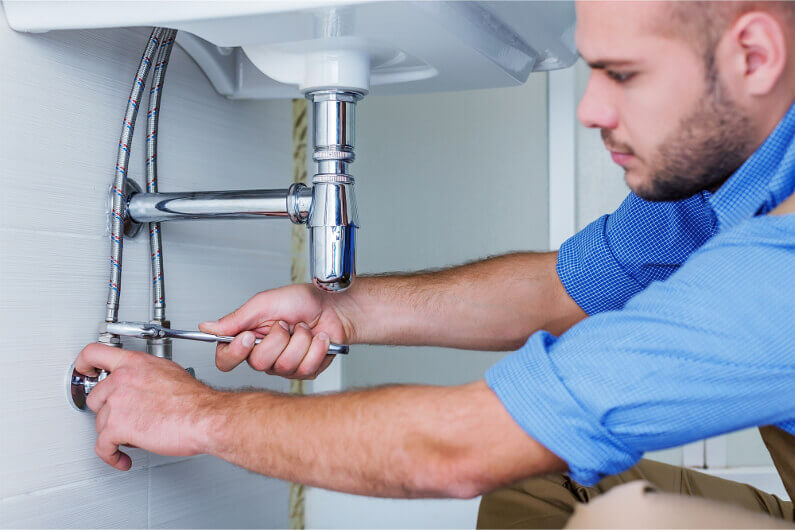Pulse of Information
Stay updated with the latest news and insights.
Flush Away Your Worries: Plumbing Repairs Made Simple
Transform plumbing chaos into clarity! Discover simple tips and tricks to tackle DIY repairs and flush away your worries today!
Top 5 Common Plumbing Issues and How to Fix Them
When it comes to home maintenance, understanding plumbing issues is essential for every homeowner. Some of the top common plumbing issues include clogged drains, leaky faucets, running toilets, low water pressure, and water heater problems. Each of these issues can cause significant inconvenience and, if left unchecked, can lead to costly repairs. In this guide, we’ll discuss these common problems and provide you with simple solutions to fix them.
- Clogged Drains: One of the most frequent plumbing issues, a clogged drain can often be resolved using a plunger or a mixture of baking soda and vinegar.
- Leaky Faucets: This nuisance can usually be fixed by replacing the washer or O-ring within the faucet.
- Running Toilets: A running toilet can often be traced back to a faulty flapper; replacing it may solve the problem.
- Low Water Pressure: Causes may include clogged pipes or fixtures; cleaning or replacing these might restore the pressure.
- Water Heater Problems: Regular maintenance can prevent issues, but if your heater is leaking or not heating, consider checking the thermostat or calling a professional.

Essential Plumbing Tools Every Homeowner Should Have
When it comes to home maintenance, having the right tools is crucial, especially when it comes to plumbing tasks. Here’s a list of essential plumbing tools that every homeowner should consider having on hand:
- Plunger: An absolute must-have for unclogging drains and toilets.
- Pipe Wrench: Perfect for gripping and turning pipes and fittings.
- Adjustable Wrench: Versatile tool that can fit various sizes of nuts and bolts.
- Tape Measure: Useful for measuring spaces and lengths of pipes.
- Drain Snake: An effective tool for reaching and clearing stubborn clogs.
In addition to the basics, consider investing in a few more specialized tools to handle different plumbing issues. Items such as channel lock pliers, which provide a firm grip on various shapes, or a plumbing auger for deeper clogs, can save you time and frustration. It’s also wise to have a bucket on hand for managing spills during repairs. By arming yourself with these essential plumbing tools, you’ll be well equipped to tackle common plumbing problems and maintain your home's plumbing system effectively.
How to Identify Plumbing Problems Before They Become Disasters
Identifying plumbing problems early can save homeowners from costly repairs and potential disasters. Regular inspections and being aware of the common signs of plumbing issues are essential. Look for unusual noises from pipes, such as gurgling or banging, as these can indicate a blockage or pressure imbalance. Additionally, foul odors emanating from drains can suggest sewer line issues or decay, while wet spots on walls or ceilings could signal hidden leaks. By paying attention to these warning signs and performing routine maintenance, you can catch potential problems before they escalate.
Another effective way to identify plumbing issues is to monitor your water bill. A sudden increase in costs can point to hidden leaks or unnecessary water usage. It's also wise to conduct regular checks on your fixtures: inspect faucets and toilets for signs of drips or malfunctions, and ensure that showerheads and drainage systems are functioning properly. Lastly, consider scheduling annual plumbing inspections with a professional, who can offer a thorough evaluation and help you spot potential hazards before they develop into major plumbing disasters.